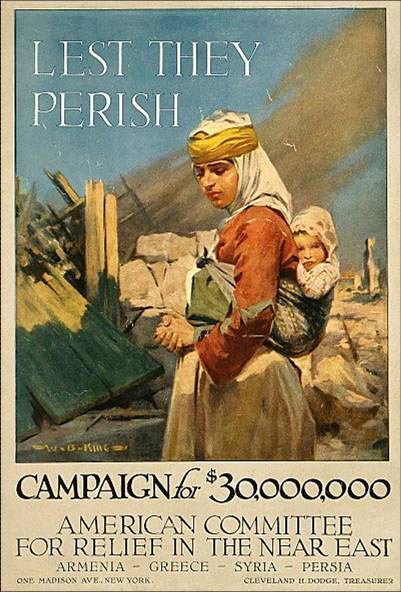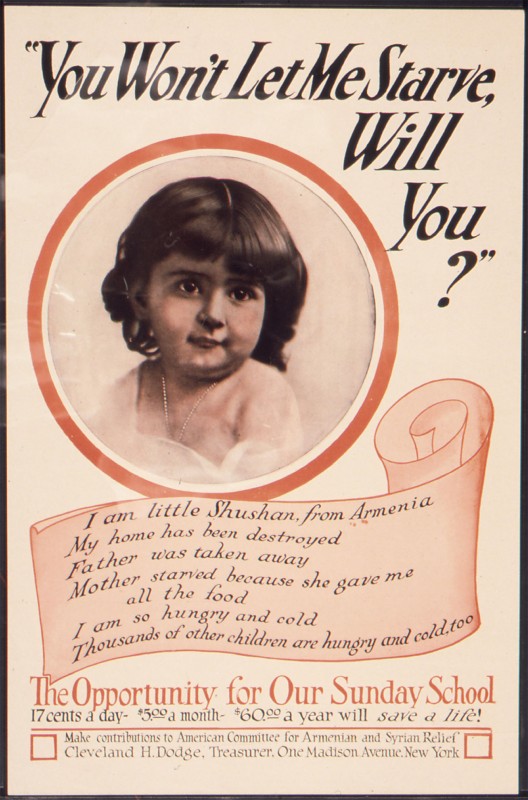In Five Images: Near East Relief Posters
The biggest curatorial challenge is deciding what to show people. Every image tells a story, but it’s impossible to give each image the same level of visibility. The “In Five Images” series offers a quick look at some of the things that you might have missed.

"The Child at Your Door"
Near East Relief was initially known as the American Committee for Relief in the Near East. The Committee’s campaign for $30,000,000 was astonishingly ambitious. This 1917 poster highlights the fact that the U.S. government was not sending money to the Near East – it was up to private citizens to save these desperate orphans and refugees.

Ethel Franklin Betts was a popular early-20th century artist. Her colorful, whimsical illustrations brought stories like “Little Orphan Annie” and “A Little Princess” to life for a generation of children. Betts’ 1918 poster of a girl dressed in ragged clothing became one of the most iconic images of the relief effort.

The posters reflect the Committee’s focus on women and children. Phrases like “Give or We Perish” reinforced the urgency of the situation: thousands of lives were depending on American donations.

Images of mothers and children were especially powerful. The photograph that inspired this poster appeared in the New Near East magazine (March 1921). The caption read ‘this sad Armenian mother, her baby the progeny of an enemy race, is depending, as are others, on us.’

Photographs of individual children made the campaign more personal. The American people fell in love with the young faces of the campaign. Beautiful children like “little Shushan” reminded Americans that Armenian orphans were as lovable as their own sons and daughters. Donors could feed a child for a year with a $60 donation. They could also “adopt” a child for $100 per year, which covered food, clothing, shelter, and an industrial education.
